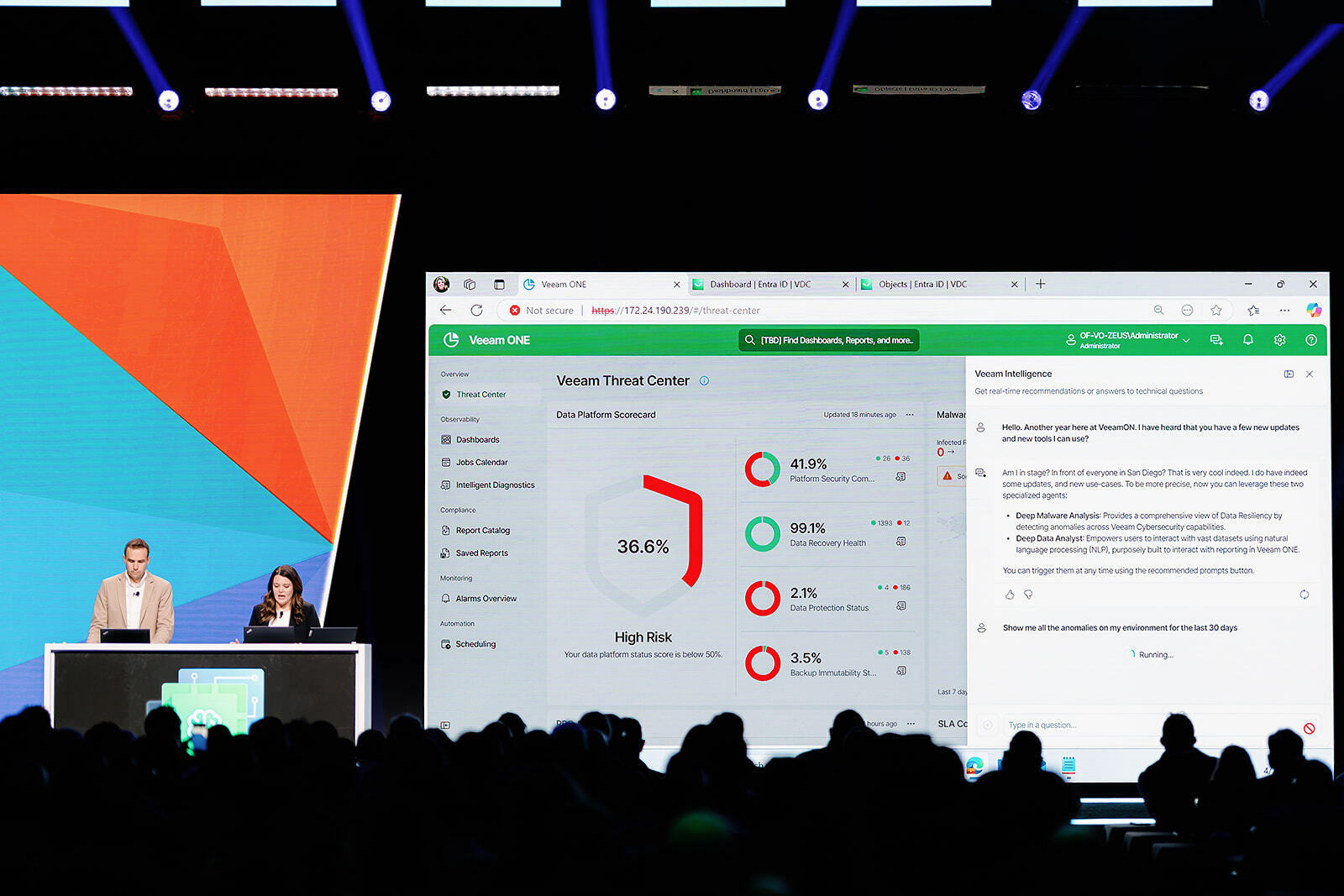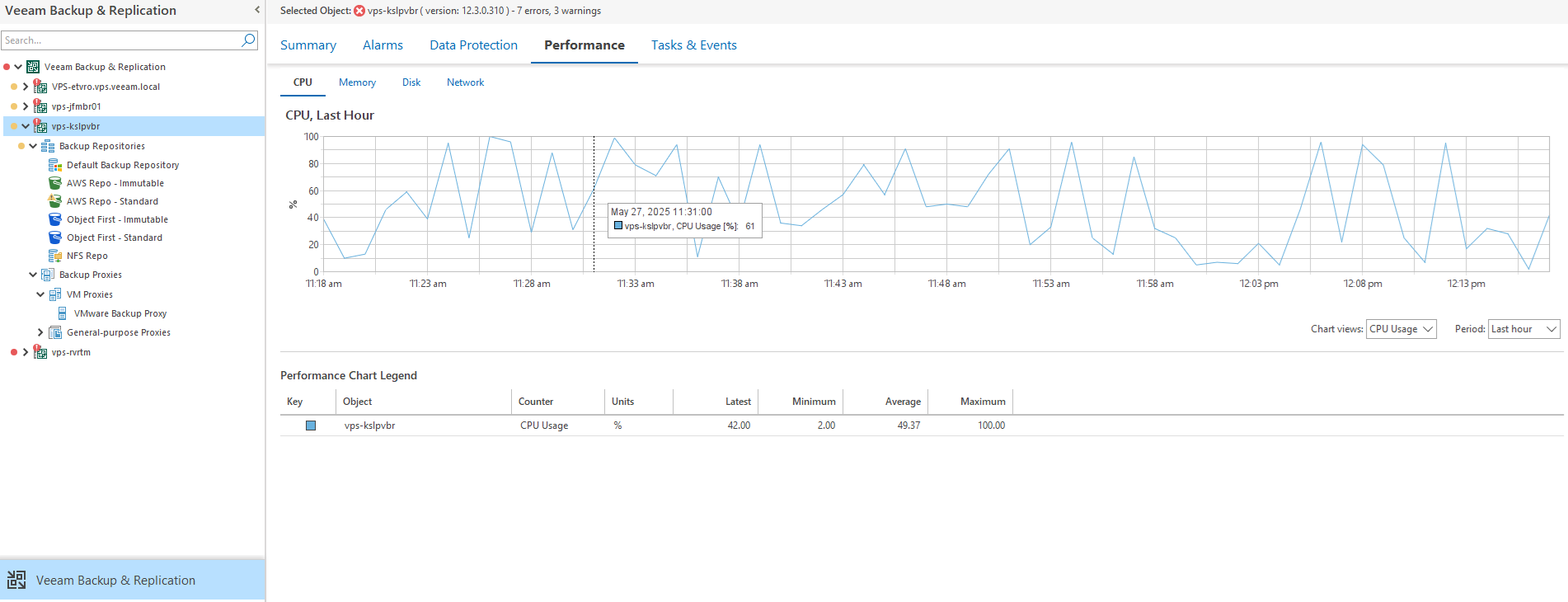VeeamON 2025 was a little over a month ago, and with it left a trail of new announcements and updates to soak in with its passing. This event is a huge event for everyone in the Veeam ecosystem, this means, customers, partners, community members and Veeam employees. This event is the premier event for data resilience, with deep dive content, platform announcements, networking opportunities and celebrations. During the keynote, we heard many of the features that are being included in the next version of the Veeam Data Platform –version 13!

Along with all the announcements involving Veeam Backup & Replication, Veeam Data Cloud and new security integrations, came announcements about Veeam ONE’s new scalability and feature enhancements. This year, I had the opportunity to discuss these new features coming in Veeam ONE v13 (included in Veeam Data Platform Advanced and Premium) and beyond. This product has been one of my go-to products at Veeam since I started, it tells us so much about our backup and virtual environments, and as Rick Vanover always says, “it will tell you something about your environment that you don’t know but should.”
Veeam ONE is a key component of the Veeam Data Platform. It powers monitoring, reporting and analytics to help customers ensure compliance, gain insights about their environment, and troubleshoot any issues occurring in real-time. By collecting data on your environment, including Veeam Backup & Replication, Veeam Backup for Microsoft 365, VMware Cloud Director, VMware vSphere and Microsoft Hyper-V, you can track efficiency, generate reports and analyze performance. This allows you to shift from being reactive to proactive, identifying and detecting anomalies to minimize downtime, and confidently know your data protection status. Let’s discuss how this will continue to develop in future releases.
Veeam Intelligence Continues to Evolve
Veeam intelligence is an AI-powered solution designed to enhance data management and decision-making within Veeam’s ecosystem, providing real-time improvements to users. With its integration with Veeam ONE, it can pull data and insights by using Retrieval-Augmented Generation (RAG) and the Veeam ONE API. This allows the intelligence to retrieve information from the environment including alarms and events, threat analysis, backup job details, and server management. This intelligence continues to evolve, adding dedicated agents for deep analysis and actionable insights. At VeeamON, during the technical keynote, we announced the Malware/Ransomware Analysis Agent and Deep Data Analysis Agent. These two agents expand the capabilities Veeam Intelligence offers, going beyond just assisting customers with technical documentation but providing deep analysis of the data with more proactive-actionable insights.
First let’s talk about the Malware/Ransomware Analysis Agent. Security is top of mind for every organization, with IT Professionals looking to continuously strengthen their cyber resilience. The Veeam Data Platform has several features that can help with this, including inline entropy analysis, signature-based malware scanning, YARA scanning, and indicators of compromise (IOC) tools detection. This agent takes it further by providing a comprehensive overview of the anomalies detected in the environment right through the Veeam Intelligence chat. From there you can facilitate self-healing actions, view malware anomalies detected by type, understand the blast radius, and identify the most recent recommended restore point. This allows you to perform additional actions, for example, performing an ad-hoc scan of a workload or triggering a SureBackup. You can see an example of this in the screenshot below.

The second agent introduced is the Deep Data Analysis Agent. This agent harnesses the datasets Veeam ONE collects to allow users to be more interactive with reporting. This enhances operational efficiency, because you can simply ask Veeam Intelligence to generate a report for you, eliminating the need to manually locate and run the report. Now with the reports right at your fingertips, it’s easier than ever to use reports and make decisions based on their datasets.
Reporting Engine Powers Generation
On the topic of reporting, Veeam ONE contains a variety of reports that puts current and historical data in a readable format, allowing organizations to ensure proper protection. In the next release, a dedicated reporting PostgreSQL database will allow for better data management, and utilization while speeding up the report generation. Say so long to the days of waiting for a report to generate, you will be saying “Holy Smokes! That was fast,” with these new improvements.
The efficiency continues with a JavaScript-based reporting engine providing users with an HTML5 experience, increasing usability, accessibility and performance. With this new interface, the reporting layout gets an upgrade. Now you can see previews of reports before generation, have easier navigation through the web console, and are able to search reports based on tags. For example, say you are running Nutanix AHV and you want to see the reports Veeam ONE contains that provide data on these workloads. Simply filter by the tag, and the reports will be presented to you without having to dig through a user guide. There are more options available to scope reports, and it’s more dynamic, providing in-depth views and filtering options. Lastly you can export reports in PDF or a clean CSV.
Here is an example of what the new reporting capabilities will look like. This is the Immutable Workloads report, and you can see if looks a bit different than in previous versions, but it still provides the same critical data ensuring your data is secure.

Expanded Analytics in Veeam Data Platform
Veeam Data Platform Advanced and Premium users gain more integration within the Veeam Backup & Replication (VBR) Console. Now you can find and run reports directly from VBR, making analytics and documenting your environment even easier. For this, first, you need to check that you have the proper license and second, that you have added VBR into your Veeam ONE. From there you can view dashboards, analyze performance charts, and work with different, interactive views. This continued integration across the platform makes it easier than ever to ensure protection status, maintain recoverability, and ensure compliance.

Just Some of What is to Come!
Veeam ONE continues to innovate its capabilities making it easier to use, navigate and respond. It helps uncover protection gaps, mitigate potential threats, help minimize downtime and provides automated remediation and responses. Its continued dedication to support the Veeam Data Platform and its friends (Veeam Vault, Veeam Backup for Microsoft 365, and more), provides observability for on-going data resilience. This blog post is just starting to describe some of the new features that will be included in version 13, but there are a few more features you may just need to wait until the release to hear about. Before I leave you, be sure to comment if you were at VeeamON in San Diego, and which feature you are excited about! For me, it’s definitely the new and improved reporting capabilities!




 Following VBR’s lead with SAML…..or even now that it’s more integrated with VBR, using VBR as identity source?
Following VBR’s lead with SAML…..or even now that it’s more integrated with VBR, using VBR as identity source?  :)
:)
